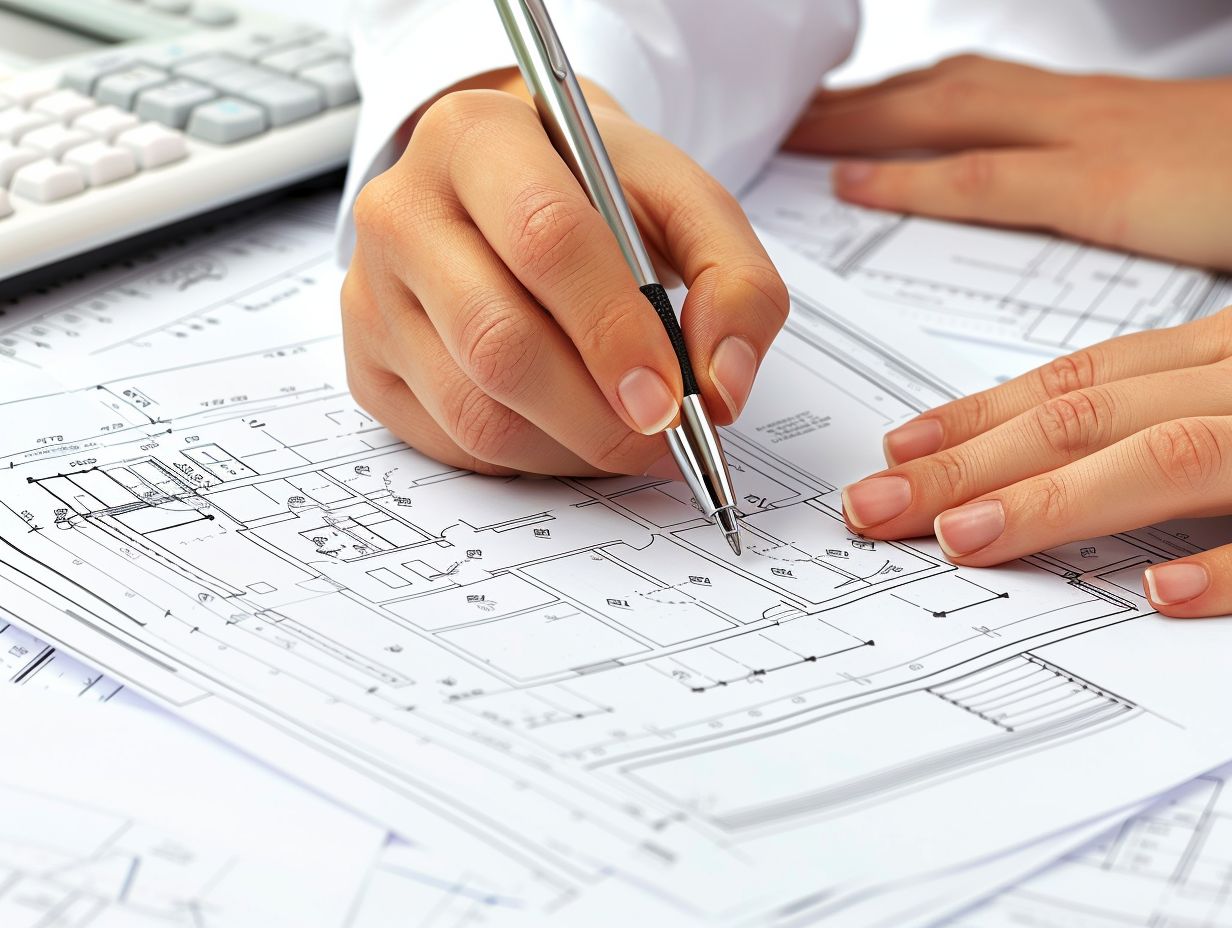
From Bamboo to Hempcrete: Innovative Materials Shaping Bay Area Sustainable Housing
Curious about the current challenges facing sustainable housing in the Bay Area? Limited availability and high costs of sustainable materials, along with resistance to change, are just a few obstacles in the way.
Innovative materials like bamboo, hempcrete, and recycled plastic are changing the game. These materials not only reduce carbon footprint but also increase durability and lower costs.
Explore successful sustainable housing projects in the Bay Area and discover how homeowners can incorporate these innovative materials into their homes for a more sustainable future.
What are the Current Challenges in Sustainable Housing?
Sustainable housing faces various challenges in the Bay Area and beyond, ranging from limited availability of innovative materials to resistance towards environmentally friendly construction practices.
These hurdles stem from the scarcity of eco-friendly building materials, making it difficult for builders to source sustainable options for their projects. The high costs associated with sustainable construction pose a significant barrier for many homeowners and developers looking to invest in environmentally conscious housing. Despite the growing awareness of the importance of energy-efficient practices, there is still a general resistance towards implementing these measures, further slowing down the widespread adoption of sustainable housing solutions.
Limited Availability of Sustainable Materials
The limited availability of sustainable materials presents a significant obstacle in sustainable housing projects, necessitating a shift towards alternative building practices and the development of green infrastructure.
This challenge affects not only the environmental impact of construction projects but also their long-term sustainability. High demand for traditional building materials exacerbates the strain on natural resources, leading to increased costs and potential negative effects on ecosystems.
To address this issue, adopting alternative materials such as recycled steel, bamboo, or hempcrete can offer viable solutions. Promoting the development of green infrastructure, such as green roofs and rain gardens, not only enhances sustainability but also improves overall energy efficiency and water management in buildings.
High Cost of Sustainable Materials
The high cost associated with sustainable materials acts as a barrier to widespread adoption in green construction, hindering the utilization of renewable resources and sustainable building practices.
This financial challenge often results in builders opting for traditional materials due to cost considerations, leading to a missed opportunity for more environmentally friendly options.
Despite these challenges, there are strategies that can be implemented to mitigate costs in green construction projects. One approach is to focus on utilizing locally sourced materials, reducing transportation costs and supporting the local economy. Innovative construction methods such as modular building and prefabrication can help streamline the construction process and reduce overall expenses.
Resistance to Change
Resistance to change within the construction industry hampers the transition towards sustainable living, impeding the adoption of eco-conscious practices, green technology, and innovative sustainable solutions.
This resistance often stems from entrenched traditional practices, fear of the unknown, and concerns over initial investment costs.
Embracing sustainable living practices is crucial for addressing environmental challenges and creating a healthier future for generations to come.
Overcoming this resistance requires education, showcasing success stories, providing incentives for sustainable initiatives, and demonstrating the long-term benefits of going green in terms of cost savings and environmental impact.
By fostering a culture of innovation and sustainability, the construction industry can play a vital role in driving eco-conscious initiatives and paving the way for a more sustainable future.
How are Innovative Materials Changing the Game?
Innovative materials such as bamboo, hempcrete, and recycled plastic are revolutionizing sustainable construction practices and paving the way for greener, more sustainable development.
These environmentally friendly materials not only offer a sustainable alternative to traditional construction materials but also contribute significantly to reducing the carbon footprint of buildings. Bamboo, known for its rapid growth and strength, is being used in flooring, furniture, and even as a structural element in some buildings. Hempcrete, made from hemp fibers and lime, provides excellent insulation properties and is increasingly popular for walls and roofs of eco-friendly homes. Recycled plastic, derived from post-consumer waste, is finding applications in durable building components like roofing tiles and insulation panels.
Bamboo
Bamboo stands out as a versatile and sustainable material that is reshaping architecture, fostering eco-housing projects, and promoting green building practices with a focus on energy efficiency.
Through its remarkable strength-to-weight ratio and rapid growth cycle, bamboo has become a go-to choice for architects and builders seeking environmentally friendly alternatives. Its applications in sustainable architecture range from structural elements like beams and columns to finishing touches such as flooring and wall panels. In eco-housing initiatives, bamboo offers a renewable solution that aligns perfectly with the principles of sustainability. Incorporating bamboo into green building practices not only reduces carbon footprint but also enhances the aesthetic appeal of structures with its natural beauty.
Hempcrete
Hempcrete, known for its low environmental impact, is gaining popularity as a sustainable building material, contributing to the construction of eco-friendly homes and fostering sustainable cities.
Hempcrete offers a range of environmental benefits such as carbon sequestration, thermal insulation, and moisture regulation, making it a versatile and eco-friendly choice for construction projects. By utilizing hempcrete in building structures, there is a significant reduction in carbon emissions and energy consumption, which helps in creating more sustainable urban spaces. The use of hempcrete not only reduces the environmental impact of construction but also promotes the health and well-being of occupants by providing a natural, non-toxic living environment.
Recycled Plastic
Recycled plastic is emerging as a viable solution for sustainable construction, contributing to renewable energy initiatives, promoting sustainable living, and supporting the development of green infrastructure in eco-friendly construction.
Its versatility extends beyond traditional building materials, bringing innovation to the forefront of sustainable design. From durable composite lumber for decking and fencing to thermal insulation in energy-efficient homes, recycled plastic offers a plethora of applications in eco-friendly projects.
Its use in renewable energy efforts, such as solar panel components and wind turbine parts, further underscores its importance in reducing environmental impact and fostering a more sustainable future. The durability and low maintenance requirements of recycled plastic make it an attractive choice for long-term sustainability in construction projects.
Benefits of Using Innovative Materials in Sustainable Housing
Incorporating innovative materials in sustainable housing offers a myriad of advantages, including reduced carbon footprint, increased durability, and lower overall cost.
These materials play a crucial role in making environmentally conscious design choices that have a lasting positive impact. For instance, utilizing bamboo, a fast-growing renewable resource, for flooring and furniture not only adds a touch of elegance but also contributes to sustainable living. Similarly, rammed earth and recycled steel can provide excellent structural support while significantly decreasing environmental impact. By incorporating these innovative materials, sustainable housing projects not only promote eco-friendly practices but also inspire a shift towards a greener future.
Reduced Carbon Footprint
One of the key benefits of using innovative materials in sustainable housing is the significant reduction in carbon footprint, achieved through energy-efficient design practices and green residential construction.
These innovative materials play a pivotal role in creating homes that are not only environmentally friendly but also cost-effective in the long run. By incorporating materials such as recycled steel, reclaimed wood, and sustainable insulation options, builders can greatly minimize the ecological impact of construction processes. In addition to reducing carbon emissions, energy-efficient design practices like passive solar heating and cooling systems further enhance the sustainability of these eco-friendly homes. Case studies have shown that such green residential construction can lead to a remarkable decrease in overall energy consumption, contributing to a healthier planet for future generations.
Increased Durability
Another significant advantage of innovative materials in sustainable housing is their enhanced durability, promoting the use of sustainable materials and green construction practices for low carbon housing solutions.
These advanced materials can help create buildings and structures that have a longer lifespan, reducing the need for frequent repairs and replacements. For example, materials like bamboo, recycled steel, and reclaimed wood are not only durable but also contribute to the eco-friendly nature of the construction projects. Incorporating these long-lasting sustainable materials not only benefits the environment in the long run but also helps in reducing overall maintenance costs for homeowners and builders. By prioritizing durability, architects and designers can design resilient structures that stand the test of time while promoting sustainability in the construction industry.
Lower Cost
Innovative materials contribute to lower overall costs in sustainable housing projects, supporting the use of sustainable building materials, fostering eco-conscious construction, and enabling innovative sustainable housing design.
These cutting-edge materials not only offer cost-efficient solutions but also play a vital role in reducing the environmental impact of construction. By integrating advanced materials like recycled steel, bamboo, and energy-efficient insulation, builders can significantly minimize expenses while making a positive contribution to sustainability.
Incorporating durable yet environmentally friendly options such as cork flooring, reclaimed wood, and solar panels not only helps in saving on operational costs but also enhances the overall energy efficiency of the structure.
Embracing these innovative practices ensures that future construction projects are both economically sound and environmentally responsible.
Case Studies of Successful Sustainable Housing Projects in the Bay Area
Exploring successful case studies of sustainable housing projects in the Bay Area sheds light on innovative approaches to urban development, fostering sustainable living practices.
One prominent example is the West Berkeley Cottage Project, which showcases the integration of green building techniques such as passive solar design and rainwater harvesting systems. The use of recycled and locally-sourced materials not only reduces environmental impact but also promotes a sense of community resilience. The project incorporates shared outdoor spaces, promoting social interaction and a stronger sense of belonging among residents. Such initiatives not only address the need for affordable, eco-friendly housing but also contribute to a more sustainable and vibrant urban landscape.
The Hatchery in Oakland
The Hatchery project in Oakland stands as a beacon of sustainable architecture, creating a model for sustainable communities and offering innovative solutions to urban development challenges.
Designed with a focus on eco-friendly practices, the Hatchery project incorporates features such as green roofs, rainwater harvesting systems, and energy-efficient technologies to reduce its environmental impact. Embodying a commitment to sustainability, the project not only benefits its residents but also serves as a catalyst for positive change in the surrounding community.
By promoting sustainable living practices and fostering a sense of connection among residents, the Hatchery project is demonstrating how thoughtful design can enhance both quality of life and environmental stewardship in urban settings. Through its emphasis on sustainability, the Hatchery project highlights the importance of prioritizing eco-conscious solutions in urban development projects.
The Ohlone in San Francisco
The Ohlone project in San Francisco exemplifies the use of sustainable materials and green architecture in fostering sustainable development practices, setting a benchmark for eco-friendly construction.
The integration of sustainable materials like reclaimed wood and recycled glass in the construction of The Ohlone project showcases a commitment to environmentally friendly practices. Architectural design principles rooted in biophilic design and passive solar strategies further enhance the building’s energy efficiency and connection to nature. By incorporating rainwater harvesting systems and green roofs, the project goes beyond traditional construction approaches to embrace sustainable development strategies that reduce environmental impact and promote a healthier urban ecosystem.
How Can Homeowners Incorporate Innovative Materials into their Homes?
Empowering homeowners to integrate innovative materials into their homes involves retrofitting existing structures with sustainable elements and incorporating cutting-edge materials in new home construction for sustainable living.
By adopting sustainable home construction practices, individuals can lower their carbon footprint and create a healthier living environment. Use of eco-friendly materials such as reclaimed wood, recycled glass, and bamboo can enhance energy efficiency and reduce waste. Embracing green building techniques like passive solar design, rainwater harvesting, and green roofs can further contribute to a sustainable lifestyle. In addition, incorporating smart home technology and energy-efficient appliances can optimize energy usage and lower utility costs, making eco-friendly living both practical and beneficial for homeowners.
Retrofitting with Sustainable Materials
Retrofitting homes with sustainable materials involves the integration of green design elements to enhance energy conservation and promote eco-friendly living spaces.
This process typically includes upgrading insulation, installing energy-efficient windows and doors, utilizing renewable energy sources such as solar panels, and incorporating water-saving fixtures.
By incorporating these eco-friendly features, homeowners can reduce their carbon footprint, lower utility bills, and create healthier indoor environments.
For example, a retrofitting project in a suburban neighborhood transformed an outdated home into a net-zero energy residence by adding a green roof, rainwater harvesting system, and passive solar design. Such initiatives not only benefit the environment but also enhance the overall quality of life for residents.
Building New Homes with Sustainable Materials
Constructing new homes with sustainable materials emphasizes energy efficiency and sustainable design principles, ensuring eco-friendly living spaces for homeowners.
- By using renewable resources like bamboo, recycled plastic, and reclaimed wood in the construction process, a sustainable home can significantly impact a smaller carbon footprint.
- Implementing energy-efficient features such as solar panels, energy-efficient appliances, and proper insulation further enhance the home’s sustainability. These practices not only reduce the environmental impact of the construction but also help homeowners save on energy costs in the long run.
Sustainable home construction goes beyond materials and incorporates design elements like passive heating and cooling, green roofs, and rainwater harvesting systems to create a holistic approach towards eco-friendly living.




No Comments